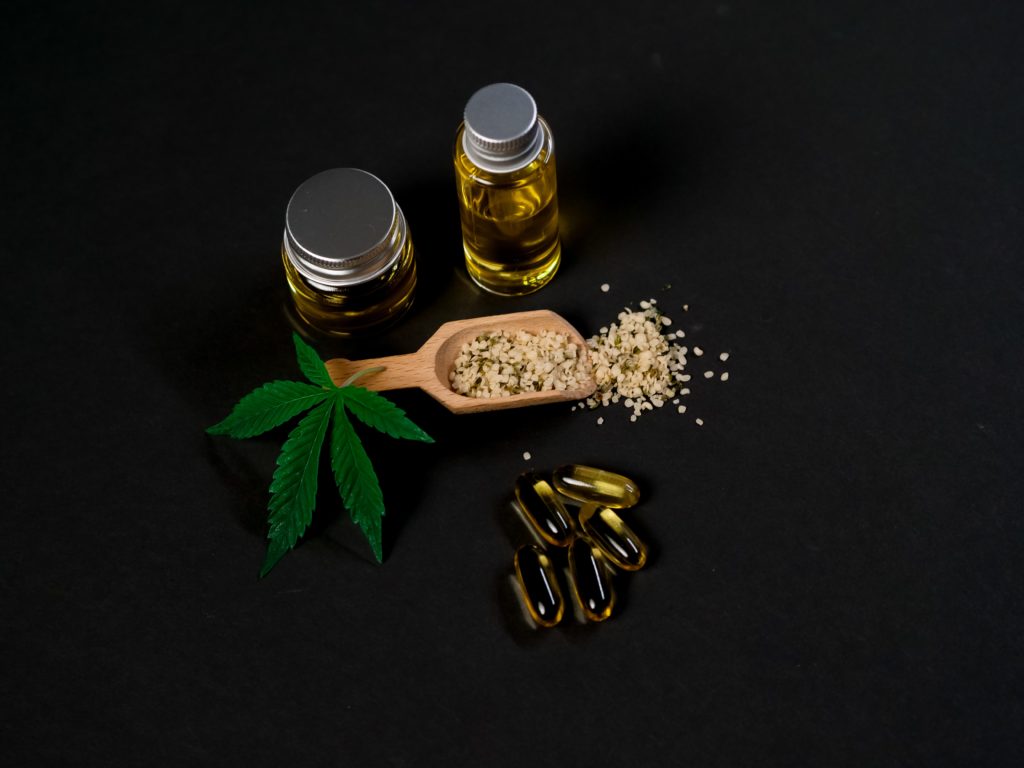
Medical marijuana in the workplace is a rapidly emerging and highly contentious issue. Canada has undergone unprecedented changes in two decades, and legalization is on the horizon. [6,7,30] The topic of marijuana is highly polarized, has evolved into multiple complex debates, and has left most people in a fog feeling overwhelmed and ultimately paralyzed by misinformation – a fog that will cost lives if not cleared.
Is medical marijuana a prescription drug?
Marijuana remains illegal for recreational use in Canada as a Schedule II drug. It is not a prescription drug and is not approved by Health Canada as a drug or medicine. [8,14] Marijuana is, however, available legally with a valid medical authorization by a physician or nurse practitioner, and until most recently must be dispensed by an appropriately licensed dispensary. The rules regarding how this works are covered in the Marihuana for Medical Purposes Regulations. [7] Very recently this regulation has been repealed and replaced – allowing for individuals to grow their own cannabis or designate another individual to do this on their behalf. The rules regarding how this works are covered in the Access to Cannabis for Medical Purposes Regulations. [6] The distinction is important as prescription drugs have to go through a rigorous process for approval and safe consumption that looks at a broad range of issues. Some of these include drug interactions, side effects, risks, and dose. [35] According to the national and international authorities on personal health and safety, marijuana is unsafe in the short and long term. [13,34,39]
How long do the risks associated with marijuana use last?
As per Health Canada, “depending on the dose, impairment can last for over 24 hours after last use…. [13] Some of the documented negative effects of marijuana are as follows: decreased attention, decreased concentration, compromised judgment and decision-making ability, impulsivity, decreased working memory, distorted sensory perception, decreased verbal fluency, paranoia, persecutory ideas, hallucinations, and severe anxiety. The risks associated with these negative effects that put the individual and others at harm last considerably longer than the commonly understood “intoxication/impairment” effects. [2,5,11,12,15-19,22,23,25,28,32,36,39]
What the experts say
“Cannabis (marihuana, marijuana) contains hundreds of substances, some of which can affect the proper functioning of the brain and central nervous system. Cannabis use can impair your concentration, ability to think and make decisions, and reaction time and coordination. This can affect your motor skills, including your ability to drive. It can also increase anxiety and cause panic attacks, and in some cases cause paranoia and hallucinations. Cannabis is one of the most widely abused illicit drugs, and can produce physical and psychological dependence. The drug has complex effects in the central nervous system, and can cause cognitive and memory impairment, changes in mood, altered perception, and decreased impulse control.” [13]
College of Family Physicians of Canada
“Research shows that dried cannabis is a potent, psychoactive substance that can have significant acute and chronic cognitive effects. Chronic use of dried cannabis may be associated with persistent neuropsychological deficits, even after a period of abstinence.” [34]
“In the past two decades, better designed epidemiological studies have found that cannabis users who drive while intoxicated double their risk of a car crash. …Culpability was higher in drivers with THC levels greater than 1 ng/ml (OR=2.87), and there was a dose-response relationship between blood THC and culpability that persisted after controlling for BAC, age and time of accident.” [39]
Statistics
In the United States, four states have legalized marijuana for recreational use. Some of the findings related to risk since these changes include:
Colorado
- Marijuana-related traffic deaths increased 48% in the three-year average (2013-2015) since Colorado legalized recreational marijuana compared to the three-year average (2010-2012) prior to legalization.
- During the same time, all traffic deaths increased 11%
- Marijuana-related traffic deaths increased 62% from 71 to 115 persons after recreational marijuana was legalized in 2013.
- In 2009, Colorado marijuana-related traffic deaths involving operators testing positive for marijuana represented 10% of all traffic fatalities. By 2015, the number doubled to 21%. [31]
Washington
The AAA Foundation examined drug tests and fatal crashes among drivers in Washington, a state that legalized marijuana in December 2012. The researchers found:
- The percentage of drivers involved in fatal crashes who recently used marijuana more than doubled from eight to 17 percent between 2013 and 2014.
- One in six drivers involved in fatal crashes in 2014 had recently used marijuana, which is the most recent data available. [1]
“The significant increase in fatal crashes involving marijuana is alarming,” says Peter Kissinger, president and CEO of the AAA Foundation for Traffic Safety. “Washington serves as an eye-opening case study for what other states may experience with road safety after legalizing the drug.” [1]
The bottom line is that legalization increases accessibility and decreases the barriers to use [39]. One of the many negative consequences of such a change is the impact on safety [1,31]. Canada should expect no different when it comes to its roads or safety-sensitive workplaces.
Legalization and the workplace
Recognize that cannabis is not a prescribed drug; it is legally accessible as an alternative therapeutic application. [6,13,14] The fact that employers have a duty to accommodate the underlying disability is true [4,33]; however, this cannot be done at the expense of workplace safety [9]. The evidence is too great to reasonably conclude that cannabis and safety-sensitive activities can mix safely, regardless of the existence of medical authorization or legal status [2,3,5,10-12,15-29,36-39].
Employers should stop comparing cannabis to alcohol, and recognize that cannabis is a different drug with persistent neurocognitive effects [5,15]. Employers recognize that other highly potent prescription drugs are equally unacceptable in safety-sensitive work environments. They can be confident that the right to safety supersedes other protected grounds under human rights legislation, as the counter argument would fly in the face of reason. A discriminatory standard is allowable, provided that interests are balanced and a valid bona fide occupational requirement to adopt the standard exists. [4]
Adopting a safe-for-duty or fit-for-duty standard, and having a professionally developed policy, supervisor awareness training, employee awareness training, and reliable testing procedures to enforce the standard is the best way to start. Employers must be hypersensitive to privacy, working in absolute confidence. They should work with their labour relations department and focus on the unified goals of getting everyone home safe, removing the risk, and doing everything reasonable to keep the individual employed. This means never automatically terminating an employee, and never allowing a risk to go unmanaged. It is important to be transparent, stand firm about not allowing accommodation to compromise safety, and maintain that cannabis and safety-sensitive work do not mix. To manage this challenge properly, employers must be extremely flexible and collaborate to find alternative means to return workers to their duties, or alternative duties that allow for compatible and appropriate medical treatment.
References
- AAA Foundation for Traffic Safety . 2016. Fatal Road Crashes Involving Marijuana Double After State Legalizes Drug. May 10. Accessed August 1, 2016. http://newsroom.aaa.com/2016/05/fatal-road-crashes-involving-marijuana-double-state-legalizes-drug/.
- Azorlosa, JL, MK Greenwald, and ML Stitzer. 1995. “Marijuana smoking: effects of varying puff volume and breathhold duration.” The Journal of Pharmacology and Experimental Therapeutics 272(2):560-9.
- Bergamaschi, MM, EL Karschner, RS Goodwin, KB Scheidweiler, J Hirvonen, RH Queiroz, and MA Huestis. 2013. “Impact of prolonged cannabinoid excretion in chronic daily cannabis smokers’ blood on per se drugged driving laws.” Clinical Chemistry 59(3):519-26.
- Canadian Human Rights Commission. 2007. Bona Fide Occupational Requirements and Bona Fide Justifications under the Canadian Human Rights Act. Accessed October 5, 2010. http://www.chrc-ccdp.ca/sites/default/files/bfore_0.pdf.
- Crean, Rebecca D, Natania A Crane, and Barbara J Mason. 2011. “An Evidence Based Review of Acute and Long-Term Effects of Cannabis Use on Executive Cognitive Functions.” Journal of Addiction Medicine 5(1): 1–8.
- Government of Canada. 2016. “Access to Cannabis for Medical Purposes Regulations.” August 24. Accessed October 19, 2016. http://laws.justice.gc.ca/PDF/SOR-2016-230.pdf.
- —. 2013. “Marihuana for Medical Purposes Regulations.” Accessed February 15, 2015 . http://www.laws-lois.justice.gc.ca/PDF/SOR-2013-119.pdf.
- Government of Canada . 1996. Controlled Drugs and Substances Act. June 6. Accessed October 19, 2016. http://laws-lois.justice.gc.ca/eng/acts/c-38.8/.
- Government of Canada. 2014. Canada Occupational Health and Safety Regulations (SOR/86-304). October 31. Accessed October 25, 2014. http://laws-lois.justice.gc.ca/eng/regulations/SOR-86-304/.
- Grotenhermen, F. 2003. “Pharmacokinetics and Pharmacodynamics of Cannabinoids.” Clinical Pharmacokinetics 42(4):327-60.
- Hart, CL, W Van Gorp, M Haney, RW Foltin, and MW Fischman. 2001. “Effects of acute smoked marijuana on complex cognitive performance.” Neuropsychopharmacology 25(5):757–65.
- Hartman, RL, and MA Huestis. 2013. “Cannabis effects on driving skills.” Clinical Chemistry 59(3):478-92.
- Health Canada. 2015. Consumer Information – Cannabis (Marihuana, marijuana). Accessed May 9, 2016. http://www.hc-sc.gc.ca/dhp-mps/marihuana/info/cons-eng.php.
- —. 2013. Information for Health Care Professionals. Accessed May 2015. http://www.hc-sc.gc.ca/dhp-mps/marihuana/med/infoprof-eng.php.
- Heishman, SJ, K Arasteh, and ML Stitzer. 1997. “Comparative effects of alcohol and marijuana on mood, memory, and performance.” Pharmacology Biochemistry & Behavior 58(1):93-101.
- Huestis, MA, DA Gorelick, SJ Heishman, and KL Preston . 2001. “Blockade of effects of smoked marijuana by the CB1-selective cannabinoid receptor antagonist SR141716.” Archives of General Psychiatry 58(4): 322-8.
- Kelleher, LM, C Stough, AA Sergejew, and T Rolfe. 2004. “The effects of cannabis on information-processing speed.” Addictive Behaviors 29(6):1213-9.
- Lane , SD, DR Cherek, OV Tcheremissine, LM Lieving, and CJ Pietras. 2005. “Acute marijuana effects on human risk taking.” Neuropsychopharmacology 30(4):800-9.
- Leirer, VO, JA Yesavage, and DG Morrow. 1991. “Marijuana carry-over effects on aircraft pilot performance.” Aviation, Space, and Environmental Medicine 62(3):221-7.
- Loflin, M, and M Earleywine. 2014. “A new method of cannabis ingestion: the dangers of dabs?” Addictive Behaviors 39(10):1430-3.
- Mackie, K. 2005. “Distribution of cannabinoid receptors in the central and peripheral nervous system.” Handbook of Experimental Pharmacology (168): 299-325.
- McDonald, J, L Schleifer, JB Richards, and H De Wit. 2003. “Effects of THC on behavioral measures of impulsivity in humans.” Neuropsychopharmacology 28(7):1356-65.
- Miller, LL, DJ McFarland, TL Cornett, and DR Brightwell. 1977. “Marijuana: effects on free recall and subjective organization of pictures and words.” Psychopharmacology 55(3):257-62.
- Minocci, D, J Massei, A Martino, M Milianti, L Piz, D Di Bello, and A Sbrana. 2011. “Genetic association between bipolar disorder and 524A>C (Leu133Ile) polymorphism of CNR2 gene, encoding for CB2 cannabinoid receptor.” Journal of Affective Disorders 134(1-3):427-30.
- Morrison, PD, V Zois, DA McKeown, TD Lee, DW Holt, JF Powell, S Kapur, and RM Murray. 2009. “The acute effects of synthetic intravenous Delta9-tetrahydrocannabinol on psychosis, mood and cognitive functioning.” Psychological Medicine 39(10):1607-16.
- Munro, S, KL Thomas, and M Abu-Shaar. 1993. “Molecular characterization of a peripheral receptor for cannabinoids.” Nature 365(6441).
- Pertwee, RG. 2015. “Endocannabinoids and Their Pharmacological Actions.” Handbook of Experimental Pharmacology 231: 1-37.
- Pope, HG, AJ Gruber, and D Yurgelun-Todd. 1995. “The residual neuropsychological effects of cannabis: the current status of research.” Drug and Alcohol Dependence 38(1):25-34.
- Radwan, MM, MA ElSohly, AT El-Alfy, SA Ahmed, D Slade, AS Husni, SP Manly, et al. 2015. “Isolation and Pharmacological Evaluation of Minor Cannabinoids from High-Potency Cannabis sativa.” Journal of Natural Products 78(6):1271-6.
- Regina v. Parker. 2787 (Court of Appeal for Ontario, July 31).
- Rocky Mountain HIDTA Investigative Support Center Strategic Intelligence Unit . 2016. “The Legalization of Marijuana in Colorado the Impact.” Rocky Mountain High Intensity Drug Trafficking Area. Accessed September 16, 2016. http://www.rmhidta.org/html/2016%20FINAL%20Legalization%20of%20Marijuana%20in%20Colorado%20The%20Impact.pdf.
- Steel, RW, JH Miller, DA Sim, and DJ Day. 2014. “Delta-9-tetrahydrocannabinol disrupts hippocampal neuroplasticity and neurogenesis in trained, but not untrained adolescent Sprague-Dawley rats.” Brain Research 1548: 12-9.
- The British Columbia Government and Service Employees’ Union v. The Government of the Province of British Columbia as represented by the Public Service Employee Relations Commission. 1999. 26274 (Supreme Court of Canada ).
- The College of Family Physicians of Canada. 2014. “Authorizing Dried Cannabis for Chronic Pain or Anxiety.” September. Accessed May 9, 2016. https://www.cfpc.ca/uploadedFiles/Resources/_PDFs/Authorizing%20Dried%20Cannabis%20for%20Chronic%20Pain%20or%20Anxiety.pdf.
- S. Food and Drug Administration. 2016. How FDA Evaluates Regulated Products: Drugs. October. Accessed October 19, 2016. http://www.fda.gov/AboutFDA/Transparency/Basics/ucm269834.htm.
- Vadhan, NP, CL Hart, WG van Gorp, EW Gunderson, M Haney, and RW Foltin. 2007. “Acute effects of smoked marijuana on decision making, as assessed by a modified gambling task, inexperienced marijuana users.” Journal of Clinical and Experimental Neuropsychology 29(4):357-64.
- Wadsworth, EJ, SC Moss, SA Simpson, and AP Smith. 2006. “Cannabis use, cognitive performance and mood in a sample of workers.” The Journal of Psychopharmacology 20(1):14-23.
- Whitlow, CT, A Liguori, LB Livengood, SL Hart, BJ Mussat-Whitlow, CM Lamborn, PJ Laurienti, and LJ Porrino. 2004 . “Long-term heavy marijuana users make costly decisions on a gambling task.” Drug and Alcohol Dependence 76(1):107-11.
- World Health Organization. 2016. “The health and social effects of nonmedical cannabis use.” World Health Organization. Accessed July 2016. http://www.who.int/substance_abuse/publications/cannabis_report/en/









